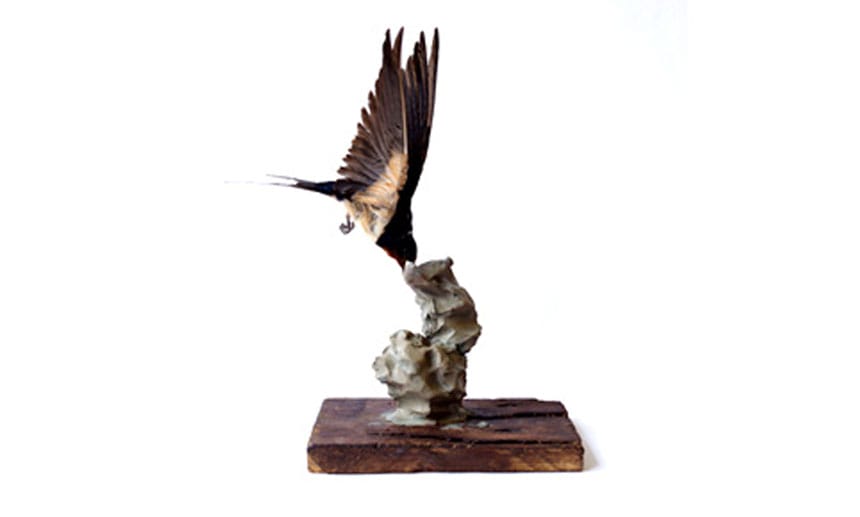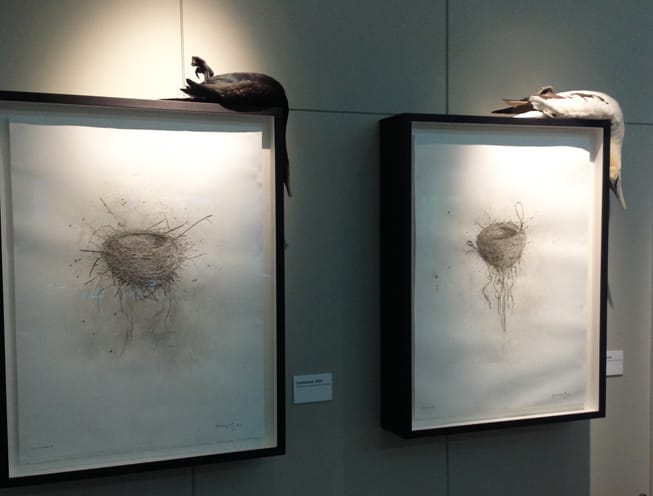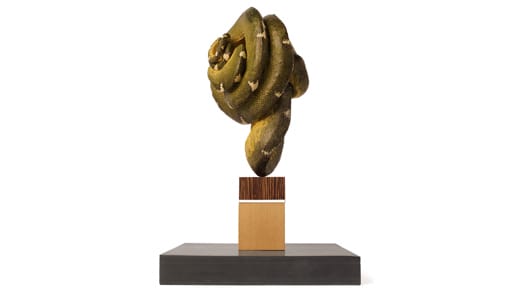
What made you pick the specimens for the first two pieces in your exhibition, ‘Gannet’ and ‘Cormorant’?
I wanted to do a pair piece and I liked the way they complimented each other, both being water birds, but black and white. Their long necks and beaks made them so elegant, I loved the way they draped, so they moulded to their surroundings.

Well, first I skinned the birds and removed the bodies to build the replica form inside. I then had the bodies cremated and used the ash to draw these images. I mixed PVA with water and drew lines to build up an image of their nests. They were quite hard to see as it was a transparent solution I was drawing with. I then scattered the ash over the glue as it dried, a bit like children do when painting with glitter. I continued to build up the lines with a paintbrush and with a sharp tool I etched into areas to create light and shade.

How do you feel your pieces look displayed in a traditional taxidermy gallery like the one at the Horniman?
Well, I’ve never shown in an environment like the Horniman before. For me, it is important to recognise that taxidermy has mostly been a traditional art form, with animals mounted in cases that mimic their natural environment. I want to evolve taxidermy as an art form; it can be more versatile than it has been and I think it was quite a bold move displaying my work here.


